Although marred by the grisly murders of three young activists, the Freedom Summer of 1964 brought revolutionary changes to Mississippi and the nation.
-
Summer 2010
Volume60Issue2
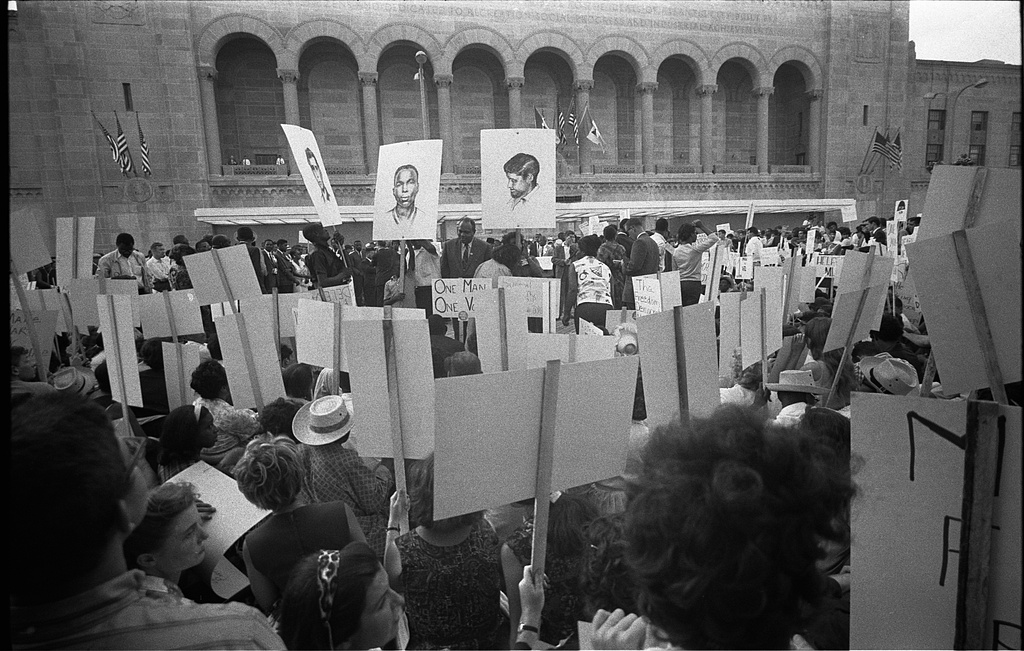
On the first day of summer in 1964, three young activists piled into a blue station wagon in Meridian, Mississippi, and headed into Klan country. Across America, it was Father’s Day, a lazy holiday of picnics, barbecues, and doubleheaders. Transistor radios blared early Beatles hits. TV commercials urged motorists to “Put a Tiger in Your Tank.” High above in Air Force One, President Lyndon Johnson flew home from California, content with the state of the union. The economy was booming, inflation was at 1.2 percent, and gas cost 30 cents a gallon. Two days earlier, after the longest filibuster in Senate history, the civil rights bill introduced a year earlier by slain President John F. Kennedy had finally passed. But Mississippi was on a hair trigger: it was on the verge of a savage summer, a violent season so radically different, so idealistic, so daring, that it would redefine freedom in America.
Before leaving Meridian that Sunday, the three volunteers were issued strict instructions. Their journey would take them into rural, redneck Neshoba County, where an arsonist had recently torched an African American church. As two whites traveling with one black, they could expect to be followed, chased, and possibly arrested. If anything went wrong, they were to call the Congress of Racial Equality (CORE) office in Meridian. If they did not return or phone in by 4 p.m., someone would start calling jails, sheriffs, and the FBI. Just before climbing into the station wagon, the black man told his kid brother that they’d go for a drive when he returned.
Although it has since achieved a racial reconciliation that rivals South Africa’s, in 1964, Mississippi was synonymous with brutal racial dominance. “Everybody knows about Mississippi, goddamn,” singer Nina Simone crooned. The nation’s poorest state was where 14-year-old Emmett Till, accused of wolf whistling at a white woman, was tied to a cotton gin fan and thrown into the Tallahatchie River. A black student’s enrollment at the state university had caused armed whites to pour into Oxford; Attorney General Robert F. Kennedy had sent in federal marshals in troop trucks, sparking an all-night riot that left two dead and dozens wounded. Mississippi was also where a sniper’s bullet had felled NAACP leader Medgar Evers, where not quite 7 percent of blacks could vote, and where shotguns blasted the shacks of those who dared to register.
Years of peaceful protest had been met with bombings, beatings, and simple murder. And the rest of the country didn’t seem to care. With Martin Luther King, Jr. focusing attention on the southern cities, Mississippi remained a neglected outpost of civil rights, too removed, too rural, too simmering with hatred to offer the slightest hope. Everybody knew Mississippi was just too dangerous to mess with. Everybody, that is, except a soft-spoken janitor’s son with a surname straight from an old spiritual:
Who’s that yonder dressed in red?
Let my people go.
Must be the children that Moses led.
Let my people go.
Bob Moses had not set out to become a leader, let alone a legend. Growing up in Harlem, he had followed his intellect to Hamilton College and then earned a master’s degree in philosophy at Harvard. More comfortable discussing existentialism than civil rights, Moses seemed destined for a career as a teacher. But in 1960, while teaching math at a New York prep school, he came across a photograph of four black men seated at a lunch counter in North Carolina. Moses studied the image of that first sit-in for hours. “Before, the Negro in the South had always looked on the defensive, cringing,” he would recall. “This time they were taking the initiative. They were kids my age, and I knew this had something to do with my own life.”
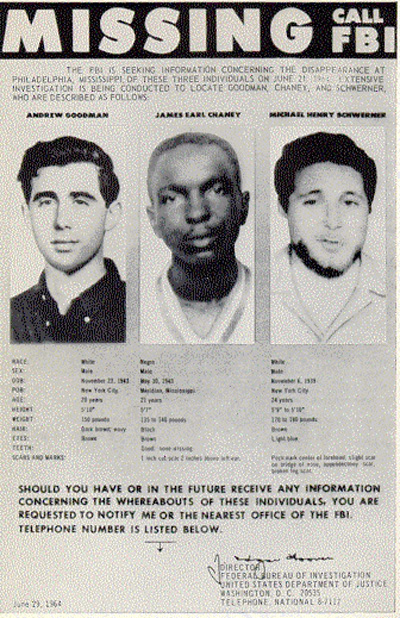
A few months later, Moses headed south, first to work for King in Atlanta, then into Mississippi. King’s Southern Christian Leadership Conference had not dared to work in the Magnolia State, but Moses pushed into its deepest corner, alone. He soon developed an icy calm that inspired and amazed those he encountered. Leading locals to courthouse registrars, Moses was beaten bloody, jailed, shot at. He saw colleagues gunned down, black bodies floating in muddy rivers.
Yet such savagery scarcely made headlines beyond Mississippi’s borders. America’s indifference, Moses said, “makes it clear that the Negroes of Mississippi will not get the vote until the equivalent of an army is sent here.” In the winter of 1963 he began to work out what this army must be. What if, instead of Mississippi’s black folk struggling in isolation, hundreds of college students poured into the state? What if they spent an entire summer registering voters, teaching in Freedom Schools, running Freedom Houses? Wouldn’t white America pay attention then?
Moses’ colleagues in the Student Nonviolent Coordinating Committee (SNCC) did not share his enthusiasm for Freedom Summer. They had already risked their lives to organize in Mississippi and borne the brunt of its violence. Now a bunch of preppy college kids with names like Pam and Geoff were to arrive en masse, overwhelming budding projects, grabbing headlines, then going home.
In meetings that raged past midnight, SNCC argued over Freedom Summer, but by early spring Moses and other speakers were recruiting on campuses from Stanford to Harvard. Their harrowing tales stunned students. Crosses burning in the night? Men and women beaten in police custody? Shotguns and bullwhips? Was this America?
All spring, Mississippi hunkered down for the worst. From the moment Freedom Summer was announced, police began stockpiling tear gas, shotguns, and electric cattle prods. The legislature doubled the state police force and banned picketing, leafleting, and assembly. As summer neared, rumors fanned the fears. Not just a few hundred, but 30,000 “invaders” were coming! Whites would be living with blacks ! Northern “beatniks” would be telling Mississippians how to treat “our colored.” And in remote hamlets, newly recruited Klansmen armed for a holy crusade against “the nigger-communist invasion of Mississippi.” In Jackson a huge armored tank waited at police head-quarters. At the nearby county fairgrounds, local authorities had created a holding camp large enough to house thousands of prisoners. Writer Eudora Welty nervously watched this buildup from Jackson and wrote a friend, “I hear that this summer all hell is going to break loose.”
In mid-June, the first 250 Freedom Summer volunteers arrived with backpacks and guitars at the Western College for Women in Oxford, Ohio. Who were these beatniks, these invaders? Many were sons and daughters of lawyers, doctors, CEOs, even a congressman, but just as many were the children of teachers, social workers, and ministers. Dozens came from New York, San Francisco, and Los Angeles, but the rest came from every corner of the country: from Tenafly, New Jersey, and Prairie City, Oregon; from Flint, Michigan, and Peoria, Illinois; from Del Rio, Texas, and Vienna, West Virginia. Schooled during the cold war, inspired by JFK and his Peace Corps, the vast majority were true believers in
American idealism. Some had been soured by the Bay of Pigs or darkening reports from Vietnam, yet all clung to the hope that whenever America fell short of its principles, its young people could restore them. But few had ever been to Mississippi. They had one week to prepare.
The volunteers’ training in Ohio was part education and part shock treatment. In workshops led by SNCC members, they studied Southern history, debated nonviolence, and learned to take beatings by dropping to the ground and assuming a fetal position. They were shocked by SNCC’s accounts of what they would be facing. Raised to believe that “the policeman is your friend,” volunteers learned about Mississippi’s law enforcement practices: “They take you to jail, strip you, lay you on the floor, and beat you until you’re almost dead.” SNCC’s stories, a volunteer wrote in his journal, “just scared the crap out of us.”
On the last night of training, Bob Moses stood before the full assembly, urging anyone who might be uncertain to go home. Only a handful did. The following afternoon, after locking arms and swaying to the rhythms of freedom songs, the rest boarded buses. The singing continued as the buses headed deeper into the South. “We hit the Mississippi state line at midnight,” one volunteer recalled, “and the bus went silent . There was no turning back now.”
That first day of Freedom Summer was unlike any in American history. Breaking down a century of Jim Crow, 250 volunteers fanned out across the state. In small towns with lilting names—Harmony, Hattiesburg, and Holly Springs—black families welcomed the first whites ever to set foot on their porches: “It’s a right fine Christian thing, a fine thing that y’all have come here,” noted one resident. Wherever they went that Sunday, volunteers noticed themselves being noticed. Host families showed them off—“Have you seen my girls yet?” Old women stopped “girls” to touch their skin, calling them “skinny” or “pretty.” Hands waved from porches, smiling faces leaned out of windows. From every soul crushed into the Mississippi soil, the same feeling emerged. “I’ve waited 80 years for you to come,” the gray-haired son of a slave told one volunteer.
The welcomes continued all morning and into the afternoon. But as the day crept toward 4 p.m., the three men in the station wagon did not return from Klan country. The phone in the Meridian CORE office did not ring. When the deadline passed, calls went out to sheriff’s offices, jails, and, by late evening, the lone FBI agent in Jackson. The names of the missing were Michael Schwerner, James Chaney, and Andrew Goodman.
Jovial, fearless, and fiercely idealistic, “Mickey” Schwerner had come to Mississippi months before Freedom Summer to open Meridian’s first Freedom House. While his wife, Rita, read stories to kids, Schwerner took teenagers for rides in his Volkswagen, speaking of freedom and a better future. “More than any white person I have ever known,” a co-worker remembered, “he could put a colored person at ease.” But the Schwerners soon received death threats—“That Jew boy is dead!” They had to move, and move again, when host families felt their homes were targeted. By late spring the Klan had set its sights on the “Jew boy” they nicknamed “Goatee.” Schwerner was the sole target of the Klan’s “elimination order.” His two friends just happened to be in the way.
Before he met Schwerner, James Chaney had drifted from job to job. Raised black and poor in Meridian, he had been cowed into silence. Then one afternoon he dropped into the new Freedom House and kept coming back, emboldened by the gregarious Schwerners. Soon Mickey and Chaney, whom Schwerner called “Bear,” were inseparable. In June Chaney accompanied Schwerner and his wife to the Ohio training program, where they were impressed by the dedication of one particular volunteer, Andrew Goodman.
Raised in a liberal Manhattan family where talk of social justice was dinnertime fare, Goodman seemed a poster boy for youthful altruism. Telling his parents about his determination to go to Mississippi, he considered Freedom Summer “the most important thing going on in the country!” Only later did he confide to a friend, “I’m scared, but I’m going.” Optimistic and a little naive, the 20-year-old Queens College student packed a sweater in his duffel bag—for a summer in Mississippi. SNCC had slated Goodman to work in Vicksburg, but Schwerner recruited him for his Freedom School. When he learned of the church burning in Neshoba County, Schwerner took Goodman and Chaney and left Ohio early to investigate.
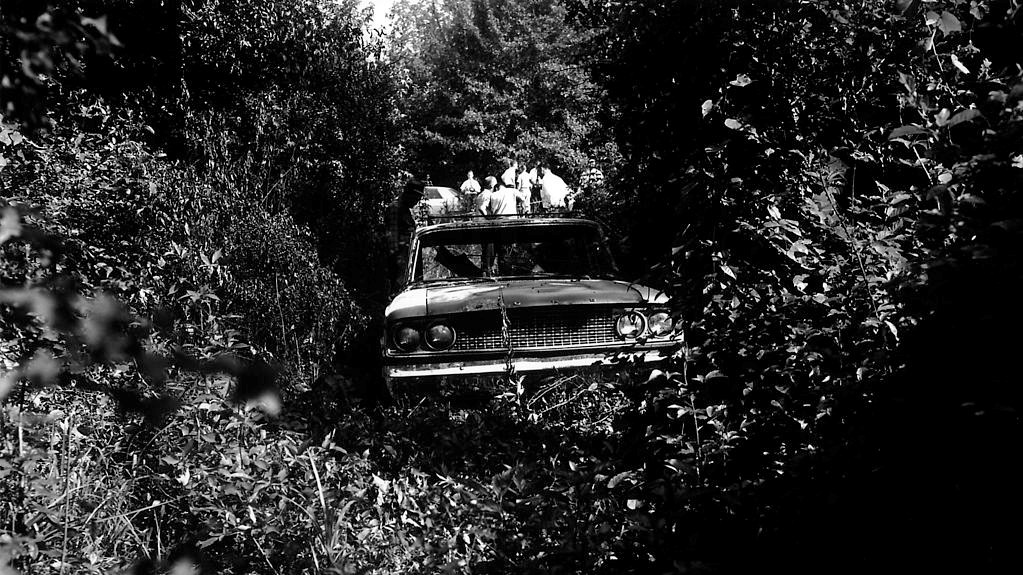
June 22, 1964: Throughout the predawn hours, the Meridian office kept up its frantic calling. Three men were missing, but no jailer had seen them. The Mississippi Highway Patrol refused to issue a missing-persons bulletin, and the FBI rejected all pleas to investigate. Then, at 6:55 a.m., the Neshoba County jailer changed her story—Goodman, Schwerner, and Chaney had been in custody. Arrested for speeding on Sunday afternoon, they had been released at 10:30 p.m., their taillights disappearing down Highway 19, on the way back to Meridian. After that, nothing.
While Mississippi smoldered, Bob Moses stood before a second group of volunteers in Ohio. “Yesterday morning,” he began, “three of our people left Meridian, Mississippi, to investigate a church burning in Neshoba County. They haven’t come back, and we haven’t had any word from them.” The auditorium rippled with alarm. In the confusion, a waiflike woman with dark, closely cropped hair strode to the stage. Rita Schwerner asked volunteers to send telegrams to their congressmen demanding an FBI investigation. When someone asked how to spell the three names, she strode to a blackboard. The scraping of chalk could be heard in the back of the auditorium. When she wrote down her husband’s name, each young face in the audience suddenly bore a look of primal fear—this could happen to me .
That evening, volunteers in Ohio gathered to watch the news. “Good evening,” began Walter Cronkite. “Three young civil rights workers disappeared in Mississippi on Sunday night near the central Mississippi town of Philadelphia. . . .” While Cronkite spoke, FBI agents, finally set in motion by Attorney General Robert Kennedy, drove north from New Orleans. The following morning the FBI swept into Neshoba County.
All that Tuesday, men in white shirts and skinny ties swarmed through the little town of Philadelphia, where Goodman, Schwerner, and Chaney had been in custody. They set up headquarters in a motel, then went to question Sheriff Lawrence Rainey and his deputy, Cecil Price. The plump deputy said he’d watched the taillights vanish. The hulking sheriff reckoned it was all a hoax. The three men were “hid somewhere trying to get a lot of publicity out of it, I figure.” Then, early that afternoon, men fishing in a nearby swamp spotted the blue station wagon. Agents hurried to the scene and hacked their way through blackberry thickets. The car was black as an oven and too hot to touch. At 4:05 p.m., FBI director J. Edgar Hoover phoned the White House.
President Johnson ordered 200 men from the Meridian Naval Air Station to join the search. All that week Americans followed nightly news reports showing speedboats dragging muddy waters and sailors wading into fetid swamps. Still no trace. “I believe them jokers planned this and are sittin’ up in New York laughin’ at us Mississippi folk,” one man told ABC.
By early July, FBI posters of Goodman, Schwerner, and Chaney were plastered all over the South. Agents tracked down every last rumor—“running down all leads on the cranks,” Hoover told LBJ—but came up empty. On July 10 Hoover flew to Mississippi on Johnson’s orders. Newspapers predicted a breakthrough, but Hoover could only tell reporters, “I don’t close it as an absolute certainty, but I consider that they are dead.”
As Freedom Summer continued, the search haunted every volunteer. “How the ghosts of those three shadow all our work,” one wrote home. Yet neither the disappearance nor whiplash violence could dampen the summer’s spirit. Each night, pickups with gun racks circled Freedom Houses. Black churches were set ablaze, homes and Freedom Houses bombed. Volunteers were beaten with fists and tire irons, chased past cotton fields, and arrested on trumped-up charges. Yet, day after day, college students sat on tumbledown porches talking to black Mississippians about their right to vote.
Mississippi’s Jim Crow terror made democracy a hard sell. But with the help of local heroes, who had organized long before Freedom Summer, canvassers recruited enough people to hold Freedom Day registration drives at courthouses. Other volunteers ran Freedom Houses featuring lending libraries and classes in literacy and voting rights. Throughout the summer, black and white Americans lived in the same shacks, shared meals, and built a human bridge across chasms far older than the Civil War. “Nobody never come out into the country and talked to real farmers and things,” SNCC stalwart Fannie Lou Hamer remembered. “And it was these kids what broke a lot of this down. They treated us like we were special, and we loved ’em.”
The heart of Freedom Summer thrived in the Freedom Schools. A thousand students had been expected; twice that many showed up. Some classes met in crumbling shacks, others in dingy church basements, yet in each school, hands waved to be called on, backyard games resembled dances, and lessons were as revolutionary as the summer itself. Freedom School students piled onto the floor to reenact the dread Middle Passage voyages. They churned out school newspapers, ate up their first exposure to black history, and questioned, questioned, questioned. A few Freedom Schools were bombed, and others burned. Classes continued outside, under trees.
On August 4, after nearly seven weeks of intensive searching, FBI agents stood atop a huge earthen dam in Neshoba County. Shortly after 8 a.m., a dragline bit into the dam’s midsection. As the temperature climbed past 100 degrees, the digging continued. By 3 p.m. the dragline had cut a V-shaped gash almost to ground level. Blue-green flies swarmed around the cut, and a foul smell filled the air. Vultures circled overhead. One agent spotted a black Wellington boot sticking from the earth. Two hours later the agents had uncovered a jean-clad leg, a hand with a wedding ring, and finally a shirtless torso bearing a bullet hole under one armpit. Agents discreetly phoned in the news: “Reporting one WB” (one white body). Within the hour, two more bodies were found. Joining Emmett Till, Medgar Evers, and numerous unknown lynching victims, Mississippi had three more martyrs.
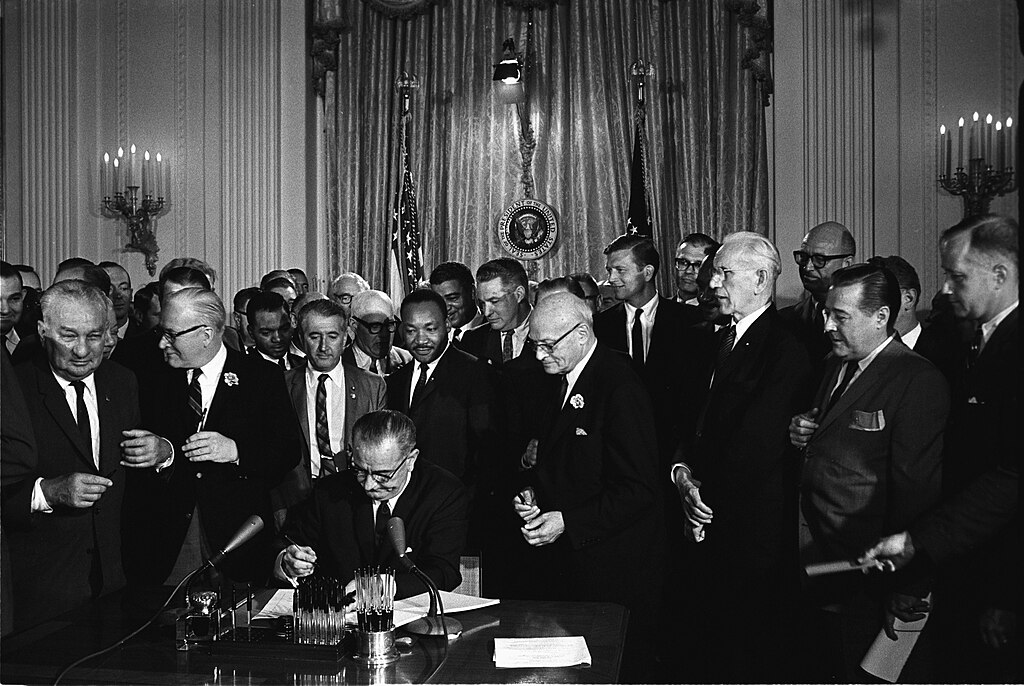
But how, after 44 days, did the FBI suddenly know where to look? Most locals suspected a payoff. Suspicion focused on anyone with a new car, barbecue, or hunting rifle. The name of the source did not come out until 2005, and still hasn’t been proven. This much is certain: throughout July, inspector Joseph Sullivan, a burly, crew-cut Bureau veteran, met with a Mississippi highway patrolman he nicknamed “Mr. X.” No one knows who told Mr. X where the bodies were, but over a steak dinner in late July he told Sullivan. Whether he received payment—said to be $30,000—is still disputed. Yet no one disagrees that the discovery of the bodies disgraced Mississippi in the nation’s eyes, newspapers denouncing it as “a blot on the country.” Writer Willie Morris recalled feeling that his home state had “hit the bottom of the barrel with these three murders,” and that reconciliation would take decades. Meanwhile, in Harmony, Hattiesburg, and Holly Springs, Freedom Summer shifted focus.
By mid-August, all attention was on the upcoming Democratic National Convention in Atlantic City, where a new Mississippi Freedom Democratic Party (MFDP) would demand to be seated in lieu of the state’s all-white delegation. As the convention approached, Martin Luther King Jr. came to Mississippi to speak for the MFDP. Sidney Poitier and Harry Belafonte snuck into the state, handing over a satchel of cash for charter buses to the convention. By the time the buses departed, hope had never been higher. In Atlantic City Fannie Lou Hamer gave an electrifying speech on national TV. Recounting her brutal beating after registering to vote, Hamer laid down a challenge: “If the Freedom Democratic Party is not seated now , I question America!” Telegrams of support poured into the White House. But Lyndon Johnson, fearing a full Southern walkout, dangled the vice presidency before Hubert Humphrey, perhaps the civil rights movement’s most active friend on Capitol Hill, convincing him to force a compromise. Two seats “at large” were offered to Freedom Democrats, who quickly rejected such “back of the bus” treatment. “We didn’t come all this way for no two seats,” Hamer said. It was a long bus ride back to Mississippi. Freedom Summer was over, but its legacy proved to be just beginning.
That fall Freedom Summer volunteer Mario Savio led the campus Free Speech Movement in Berkeley. Other veterans soon spearheaded the antiwar movement and the women’s movement. Again and again they spoke of Freedom Summer as their schooling in grassroots democracy. And as the “children that Moses led” spread his lessons, the long arc of justice slowly stretched toward Mississippi.
Meanwhile, FBI agents were infiltrating the Klan to learn precisely what had happened on that first night of Freedom Summer. How Goodman, Schwerner, and Chaney had been released at 10:30 p.m. How carloads of Klansmen had raced after them down Highway 19. How they had been pulled over, thrown in a patrol car, and taken up a dark gravel road. And how one Klansman yanked Schwerner out of the back seat, spun him around, and shouted, “Are you that nigger lover?”
“Sir,” Schwerner replied, “I know just how you feel.”
The Klansman put a bullet through Schwerner’s chest, then went for Andrew Goodman. He jerked Goodman out of the car and gunned him down without a word.
James Chaney watched from the back seat. After joining CORE, he had told his mother, “I believe I done found an organization that I can be in and do something for myself and somebody else, too.” But his mother, who had raised five children on $28 a week, knew Mississippi better.
“Ain’t you afraid of this?”
“Naw, Mama, that’s what’s the matter now. Everybody’s scared.”
Dragged out of the car, Chaney scrambled into the darkness. Three shots laid him in a ditch. The bodies were thrown into the blue station wagon and driven to the dam site, where a bulldozer waited.
On December 4, 1964, the FBI rounded up a motley assortment of Klansmen, local truckers and farmers, Sheriff Rainey, Deputy Price, and another policeman. Because murder is not a federal crime unless committed on federal property or upon federal officials, the 19 men were charged with civil rights violations. For the next three years, federal prosecutors fought legal challenges all the way to the Supreme Court. Finally, in October 1967, the men were tried in Meridian. The prosecution relied on informants’ accounts; the defense tapped the bitterness still festering from Freedom Summer: “Mississippians rightfully resent some hairy beatnik from another state visiting our state with hate and defying our people.” During recesses, the accused smirked, confident that no Mississippi jury would convict them. They were wrong.
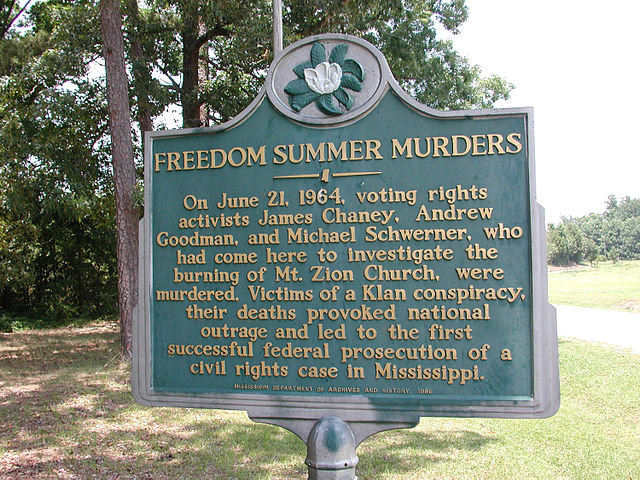
Seven men were found guilty, seven acquitted. The jury could not agree about the remaining defendants. Nevertheless, the verdicts still marked the first time since Reconstruction that anyone in Mississippi had been convicted of civil rights violations. Those convicted served sentences from three to 10 years.
Nearly 50 years after Freedom Summer, its legacy remains in dispute. Some SNCC veterans argue that the influx of volunteers derailed efforts to empower locals. Others note that, although just a few hundred voters successfully registered and the Freedom Schools did not endure, the savage season drew the country’s attention to Mississippi, forcing federal intervention. That summer, after signing the Civil Rights Act of 1964, Lyndon Johnson ordered his attorney general to “write me the goddamn best, toughest voting rights act that you can devise.” The Voting Rights Act passed in 1965; within six months, 60 percent of Mississippi’s black citizens were registered to vote. Over the next few decades, Mississippi finally lived down its cruel legacies of segregation, lynching, night riding, and shotgun justice.
Today Mississippi has more African American elected officials than any other state. The list of cities with black mayors, council members, and police chiefs reads like a tour of Freedom Summer. In 2005 another ghost was laid to rest when a Neshoba County court convicted Klansman Edgar Ray Killen of manslaughter for his role in the Freedom Summer murders. Five living members of the 1964 lynch gang remain free. Each June 21 in Meridian, marchers commemorate Goodman, Schwerner, and Chaney by demanding further prosecutions.
The idealism and daring of Freedom Summer changed more than just the Magnolia State. Some see its influence extending all the way to the White House. “Freedom Summer injected a new spirit into the very vein of life in Mississippi and the country,” according to Georgia Congressman John Lewis, who was the SNCC’s chairman in 1964. “It literally brought the country to Mississippi. People were able to see the horror and evil of blatant racial discrimination. If it hadn’t been for the veterans of Freedom Summer, there would be no Barack Obama.”

